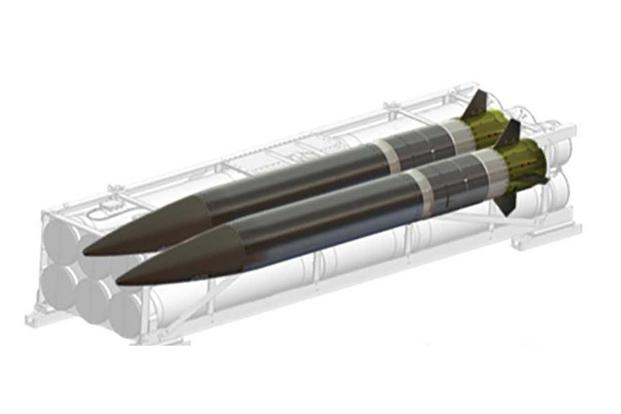Army modernization officials are confident they can add even more range to the Precision Strike Missile if the U.S. pulls out of its Cold War-era missile treaty, but national security experts warn that such a move would increase the likelihood of a confrontation with Russia.
President Trump recently said he plans to exit the Intermediate-range Nuclear Forces (INF) Treaty, arguing that Russia already violates the agreement, which prohibits all conventional and nuclear ground-launched missiles with a range of 500 to 1,000 kilometers.
On the surface, the Army long-range precision fires program -- the service's top modernization priority -- would benefit from pulling out of the INF Treaty. Doing so would allow the service to extend the range of its Precision Strike Missile (PRSM) well beyond the current limits of 499 kilometers required by the treaty.
The PRSM is designed to replace the Army Tactical Missile System, or ATACMS, which has a range of about 300 kilometers. The service plans to field the first versions of the PRSM in 2023 under an urgent material release.
"We are going to the limit of the INF Treaty; if that changes, which is a discussion that I am not part of, what we have begun to consider is would there be additional room for more range for the PRSM -- the answer is yes," Col. John Rafferty, director of Long Range Precision Fires Cross-Functional Team, said recently. "Could that be improved with additional propulsion technology? The answer to that is yes."
Scott Boston, defense analyst and Russia expert at the RAND Corporation, agrees that deterrence of Russian aggression in Europe is important, especially when it comes to counter-fire and countering Russian air defenses. But lifting limits on weapons such as the new PRSM will only increase tensions with Russia.
"I get nervous when range gets too long, because that starts to freak the Russians out," Boston said, arguing that fielding new missiles with drastically increased ranges "could be destabilizing" to the region if they can reach targets well inside Russia.
The INF Treaty does not apply to long-range, sea-launched missiles, which the U.S. needs to be considered relevant in the Pacific, Boston said.
"But it's not like you can be like 'well trust us; we'll never send them to Europe,'" Boston said. "Like they are going to believe that ... it doesn't have a nuclear warhead on it."
Trump argues that Russia has been violating the INF Treaty "for many years," and maintains it is preventing the U.S. from developing new weapons, the Associated Press recently reported.
In 2017 the White House said Russia had deployed a cruise missile in violation of the treaty.
The Obama administration also accused Russia of developing and testing a prohibited cruise missile. Russia has denied the allegations and made similar accusations that the U.S. has violated the treaty, the Associated Press reported.
Lawrence Korb, a senior fellow at the Center for American Progress, questions whether the Army really needs to increase the range of the PRSM, agreeing the Boston's point that the U.S. military already has many long-range sea and air-launched weapons in its arsenal.
Senior Army leaders have said that the service must modernize its long-range precision fires because it can no longer be certain that the Air Force will always be able to penetrate sophisticated air-defense networks to attack long-range targets.
But Korb argues that each of the services tend to ignore that they are part of a joint force when they are defending key modernization efforts.
"All of the services are guilty of this -- the Navy wants 355 ships, the Air Force wants 92 new squadrons and the Army wants to go up to 540,000 people," Korb said. "It seems to me that given our conventional advantage, vis-à-vis the Russians, we could use sea-based [missiles] if we had to. You basically don't need to do this."
-- Matthew Cox can be reached at matthew.cox@military.com.










